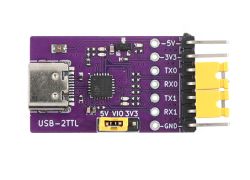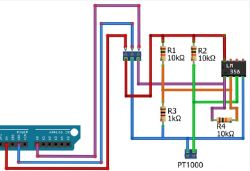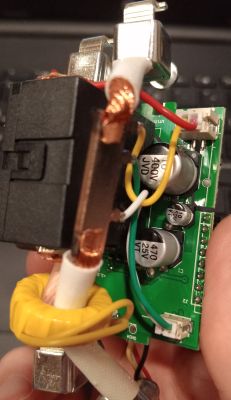I am running an APC SMT 3000VA UPS at my place with 4 AGM 200Ah batteries. The total DC voltage will be 48V. The UPS is to power a fridge, some lighting, some server, an emergency socket for a laptop in case of an emergency connected to HomeOffice etc.... I plan to connect directly to the batteries of this UPS (behind appropriate fuses) and treat these batteries as a source of DC voltage to power various automation components based mainly on ESP - such a small 48V powerhouse. "Naked 48V" I will drop in on the PoE switch. I have a dilemma as to what voltage to accept to power the rest. Do I run wires to the various places in the house where I have (will have) ESP modules "bare 48V and locally use a StepDown from 48V to 3.3/5V (but there are not many of these at mayfrients), or do I make a central transition to 12V or 24V DC (with some larger SteoDown) and distribute a lower voltage than 48V? Or maybe ditch the direct connection to the battery and rather use a 230V->12/24/48DC power supply?
The main DC applications are to power:
- Internet router/switches (6 devices scattered around the house)
- various sensors, motion/presence/temperature/humidity soldered on ESP (Dallas, SHT35, rainwater level measurement etc...)
- monostable switches for the main lighting to control the ESP+relays (plus some voltage divider at the ESPs themselves)
- a couple of LEDs on GU10 or similar (night lighting/"quasi-emergency" = to operate when there is some kind of mains failure.
Question: what voltage to adopt for distribution and what are the advantages and disadvantages of adopting this particular solution?
P.S..
I have a small meter that measures the voltage on each battery and writes to ESPHom, so I'll have a preview of how the voltage on the batteries behaves, and if their capacity doesn't bear up to a prolonged fade, I'll add some apparatus that disconnects from the batteries to keep them from discharging below 10.5V/battery.
The main DC applications are to power:
- Internet router/switches (6 devices scattered around the house)
- various sensors, motion/presence/temperature/humidity soldered on ESP (Dallas, SHT35, rainwater level measurement etc...)
- monostable switches for the main lighting to control the ESP+relays (plus some voltage divider at the ESPs themselves)
- a couple of LEDs on GU10 or similar (night lighting/"quasi-emergency" = to operate when there is some kind of mains failure.
Question: what voltage to adopt for distribution and what are the advantages and disadvantages of adopting this particular solution?
P.S..
I have a small meter that measures the voltage on each battery and writes to ESPHom, so I'll have a preview of how the voltage on the batteries behaves, and if their capacity doesn't bear up to a prolonged fade, I'll add some apparatus that disconnects from the batteries to keep them from discharging below 10.5V/battery.





